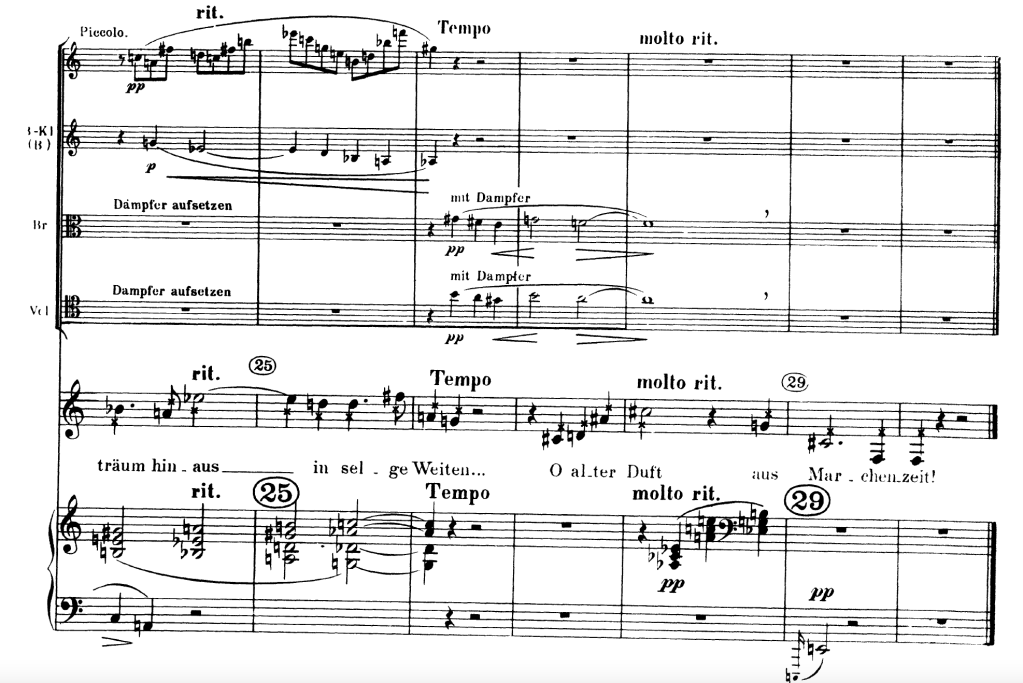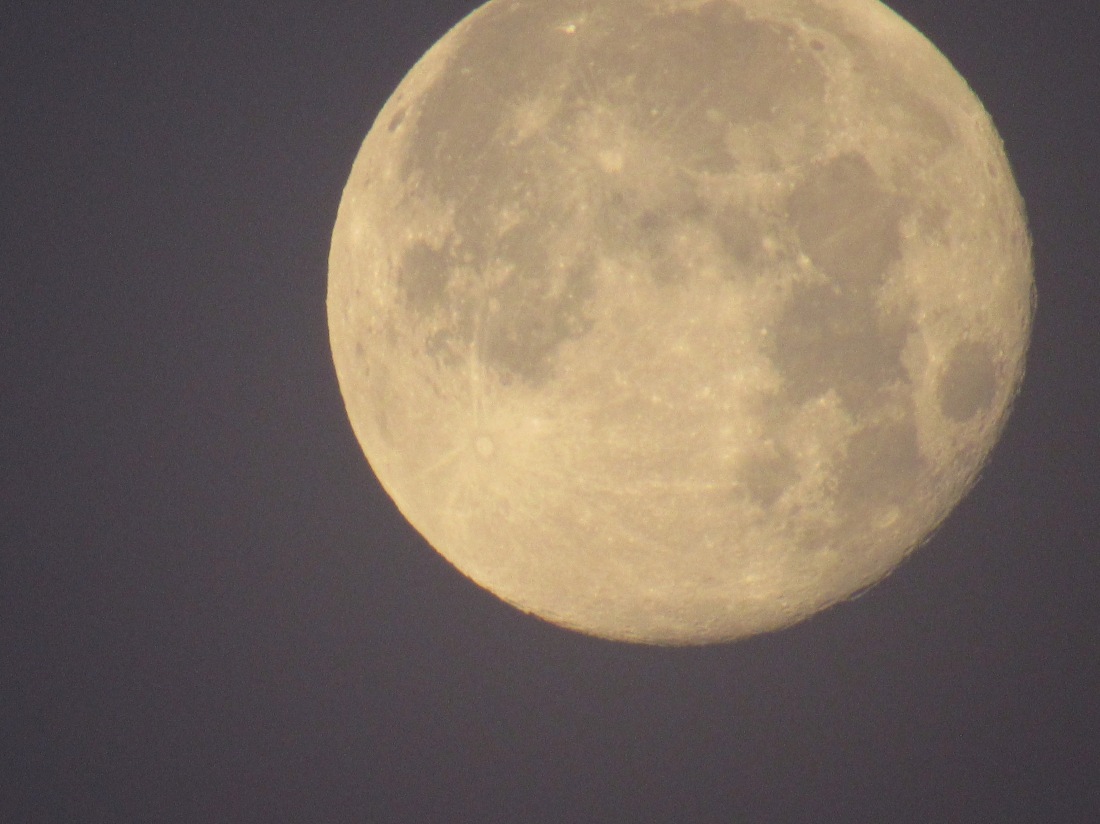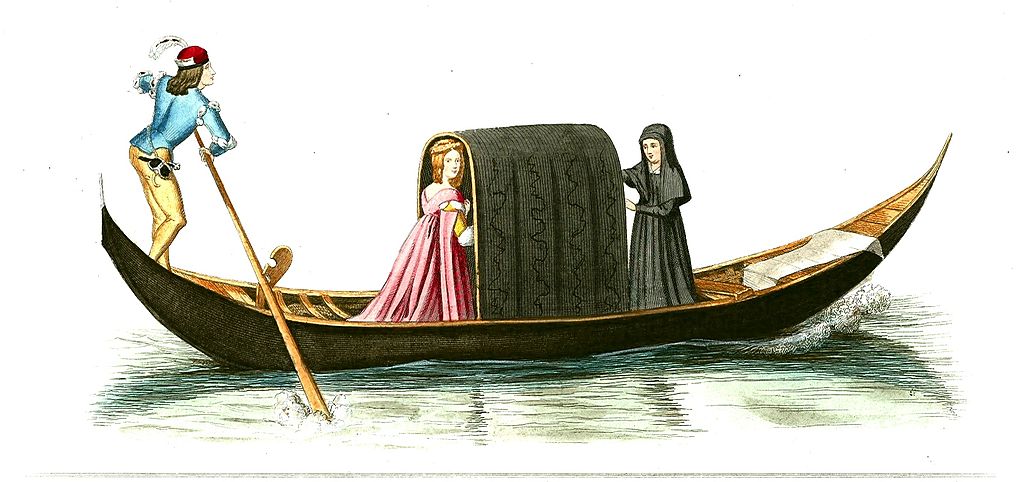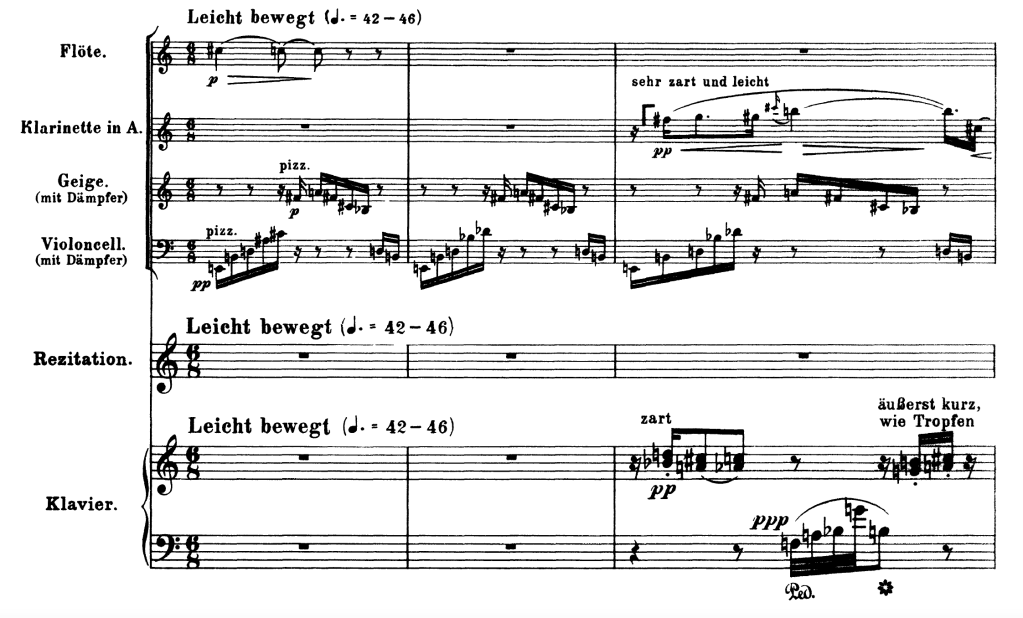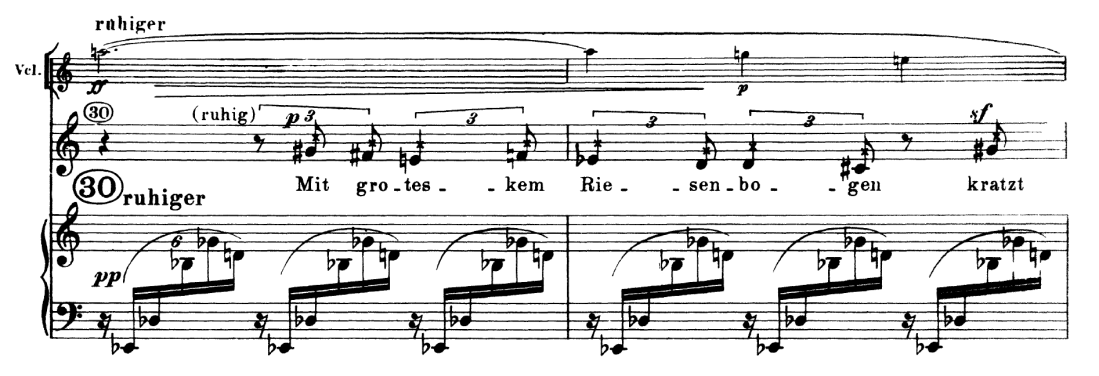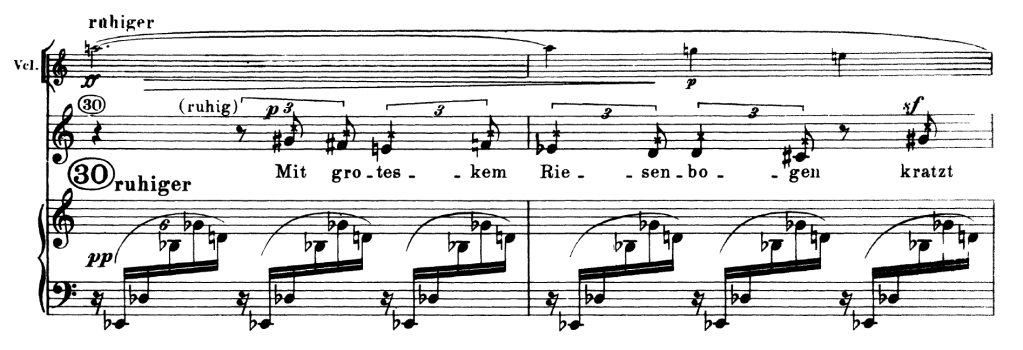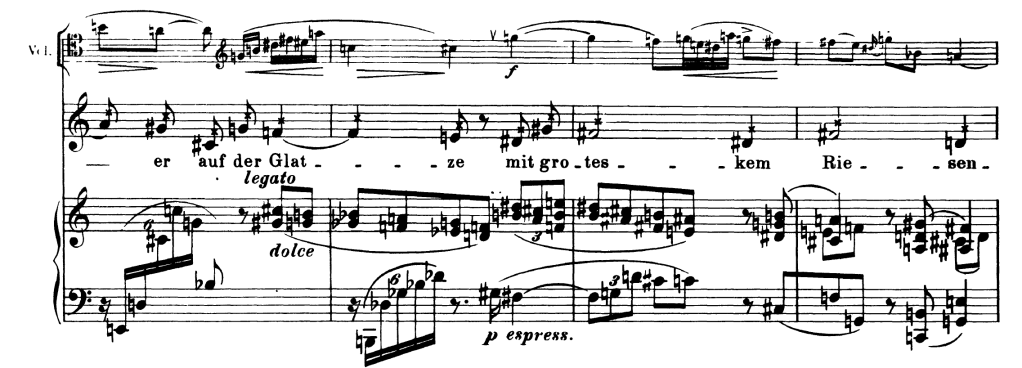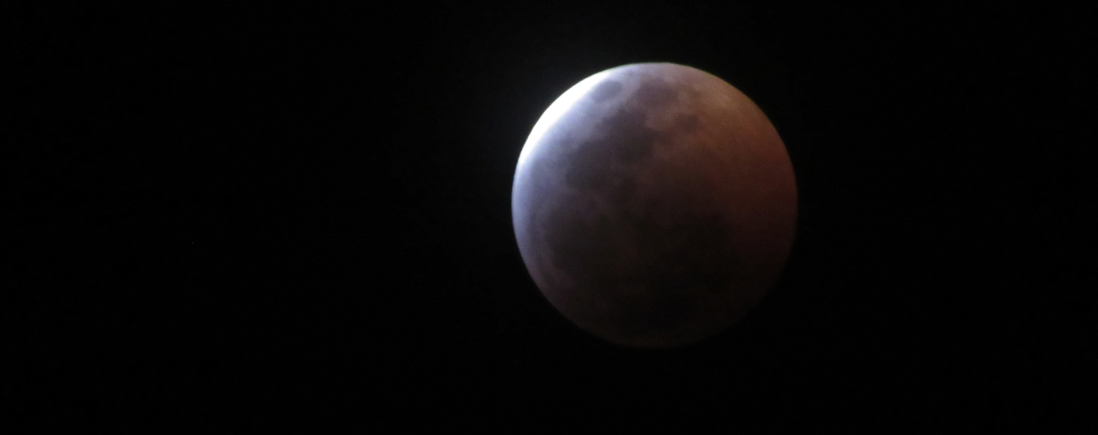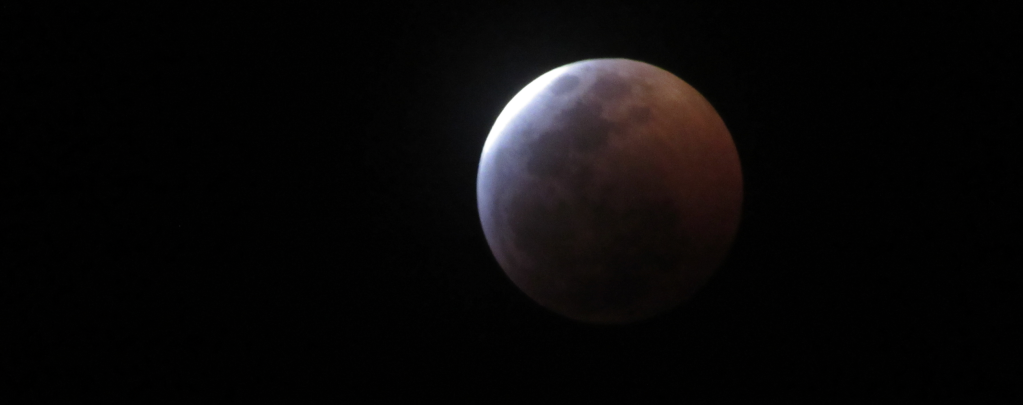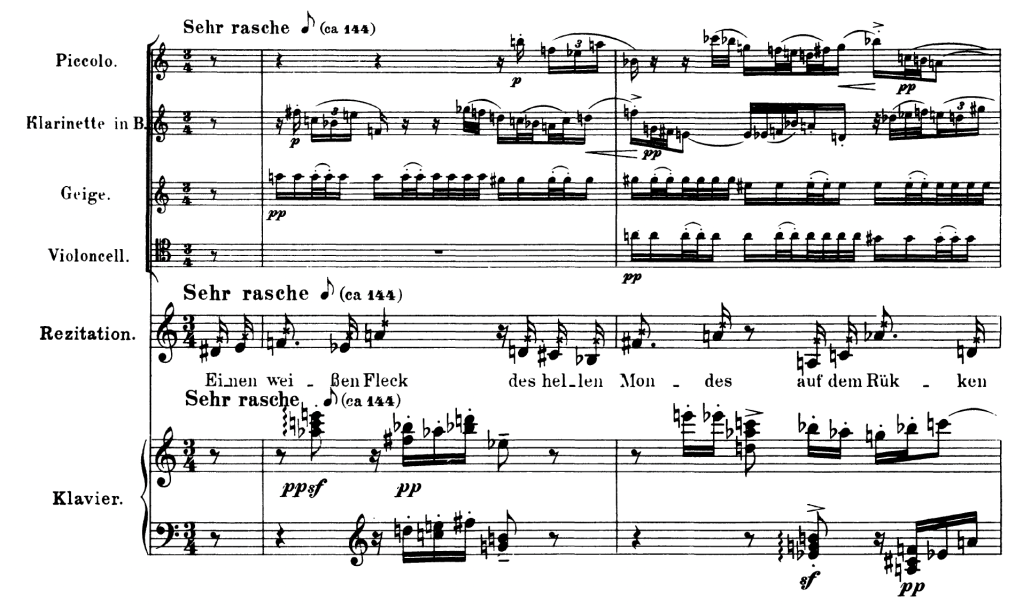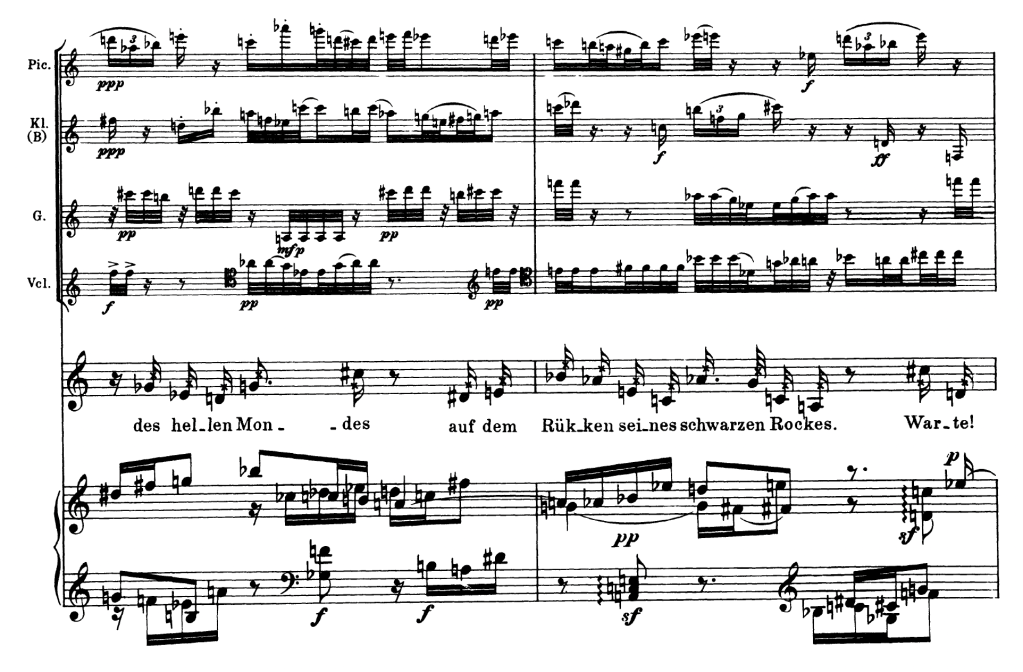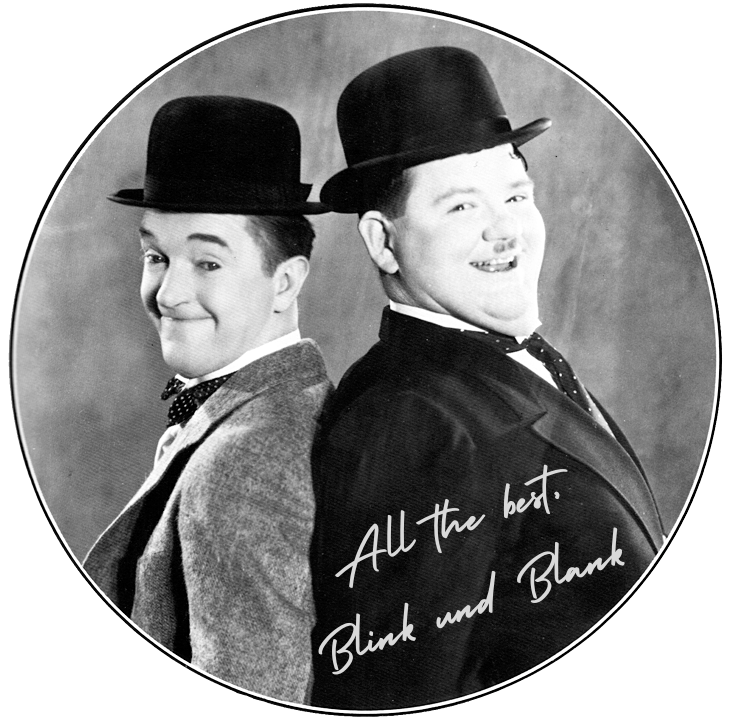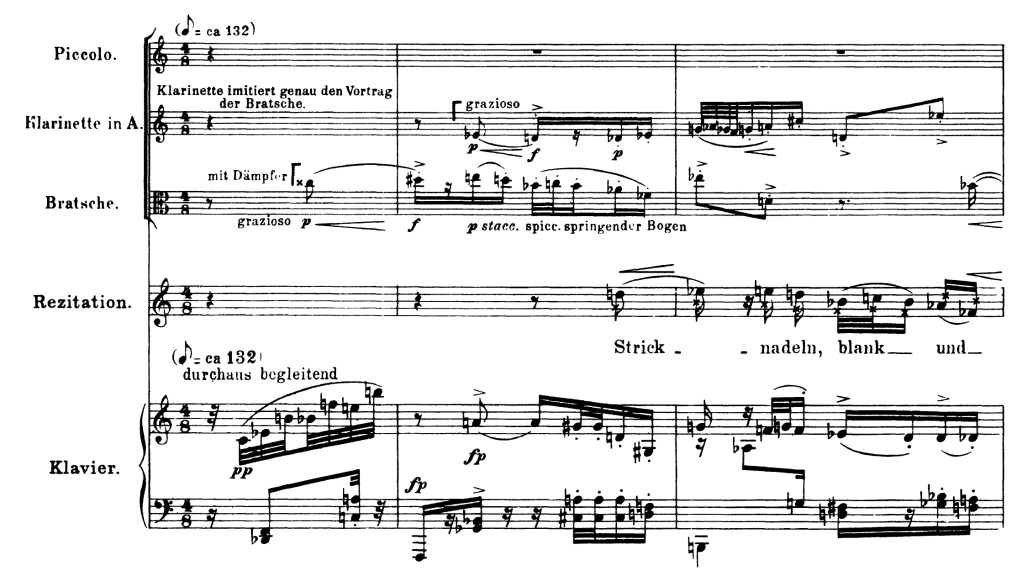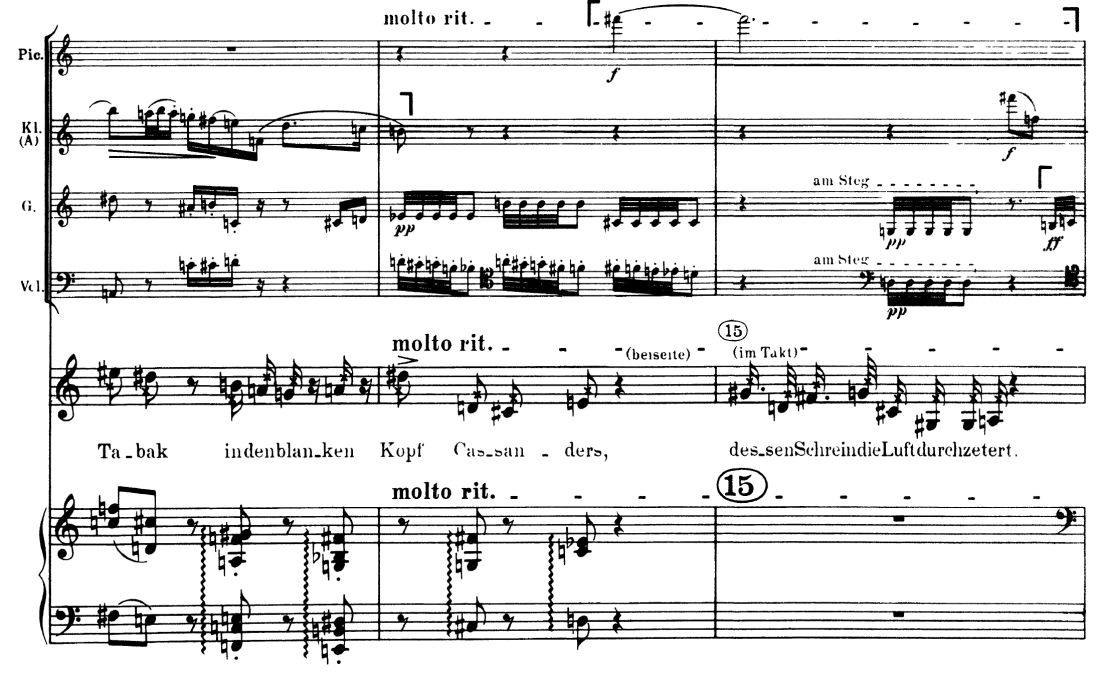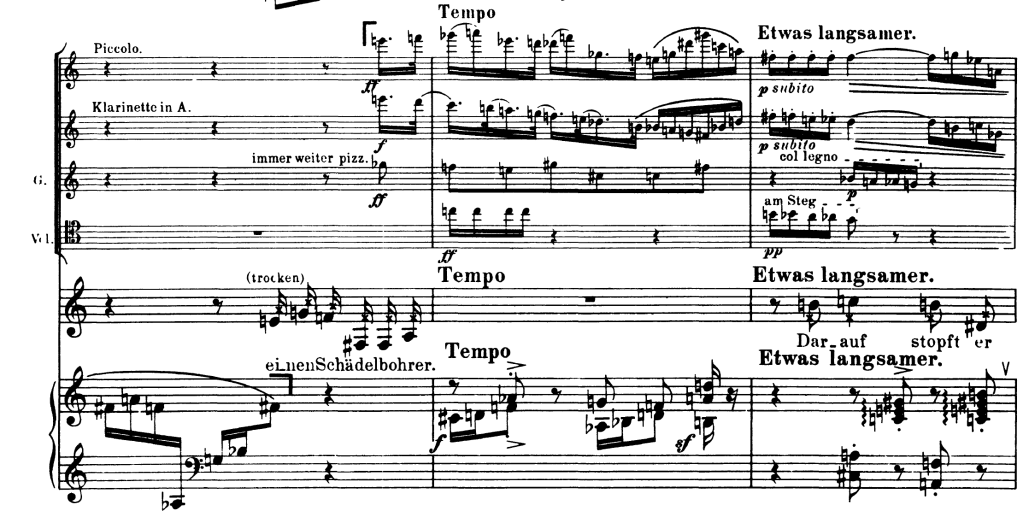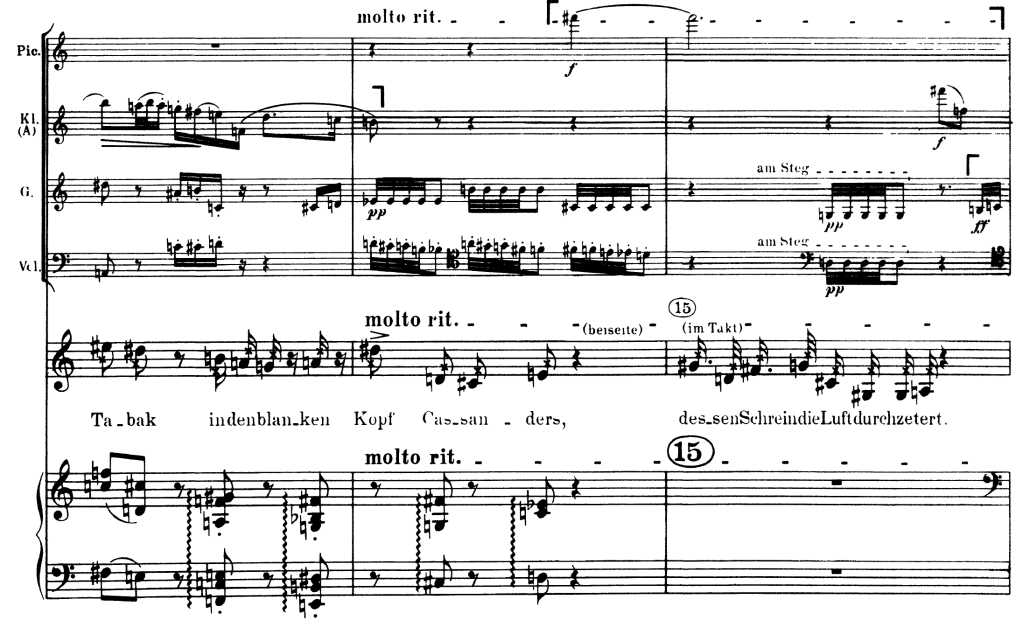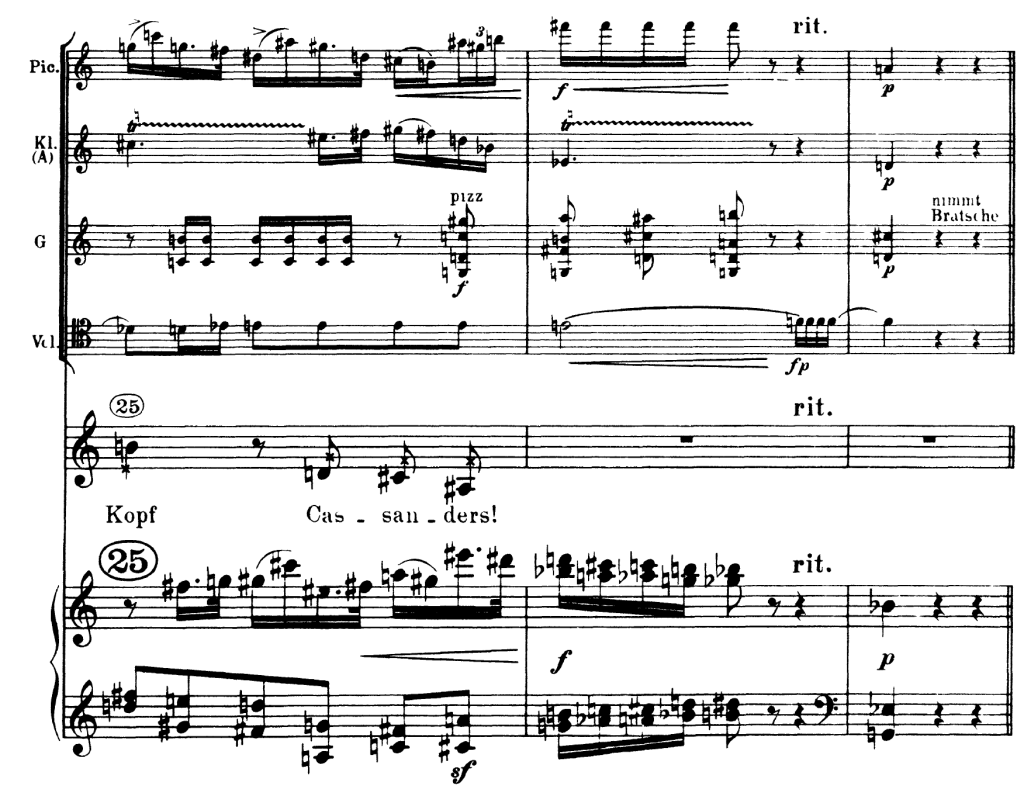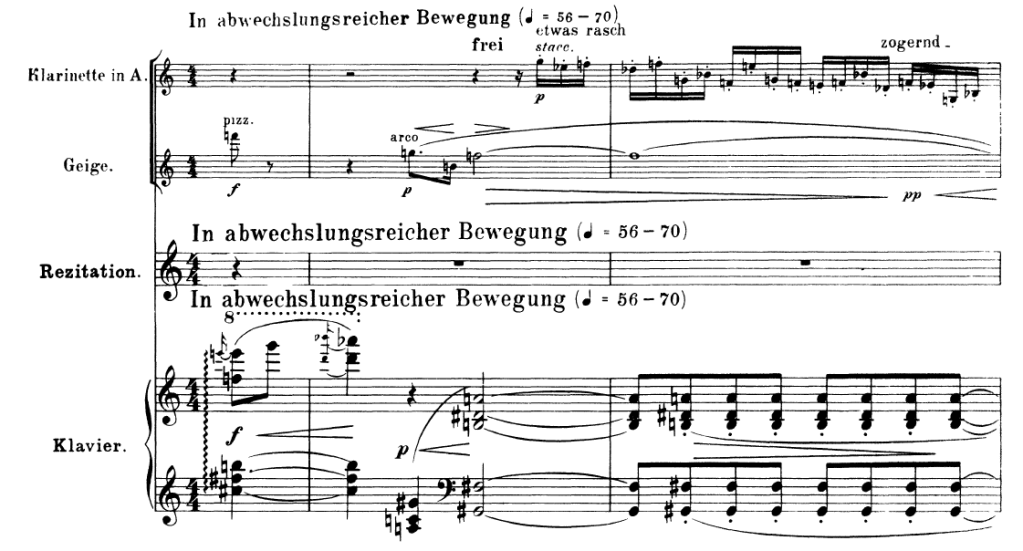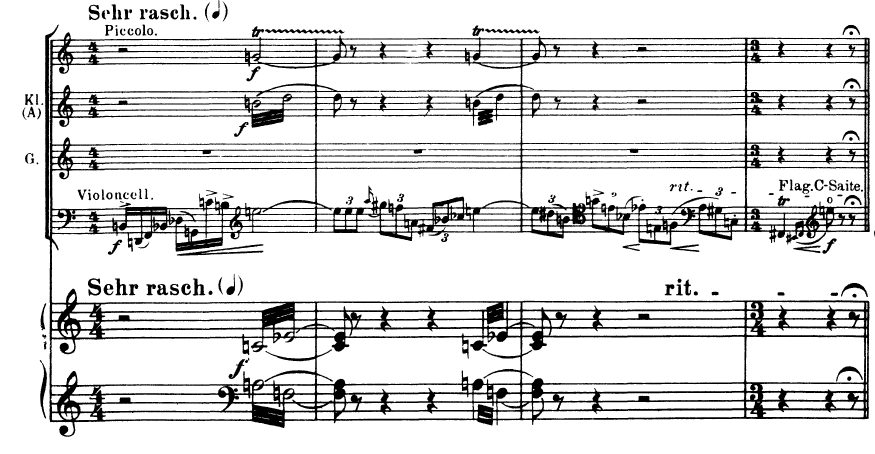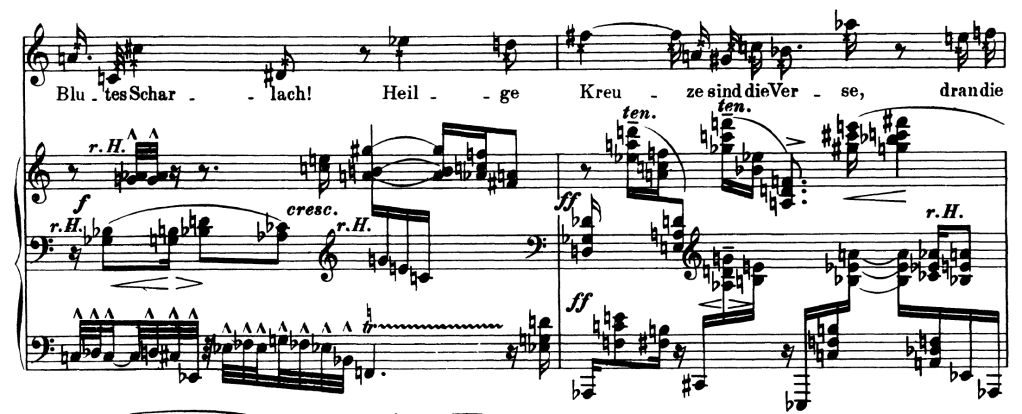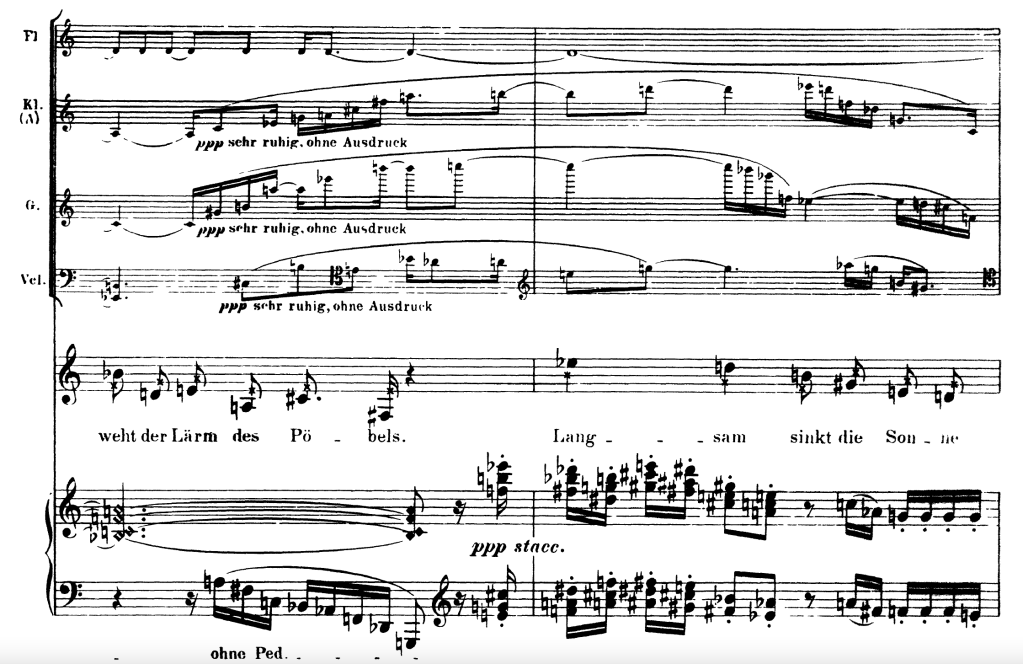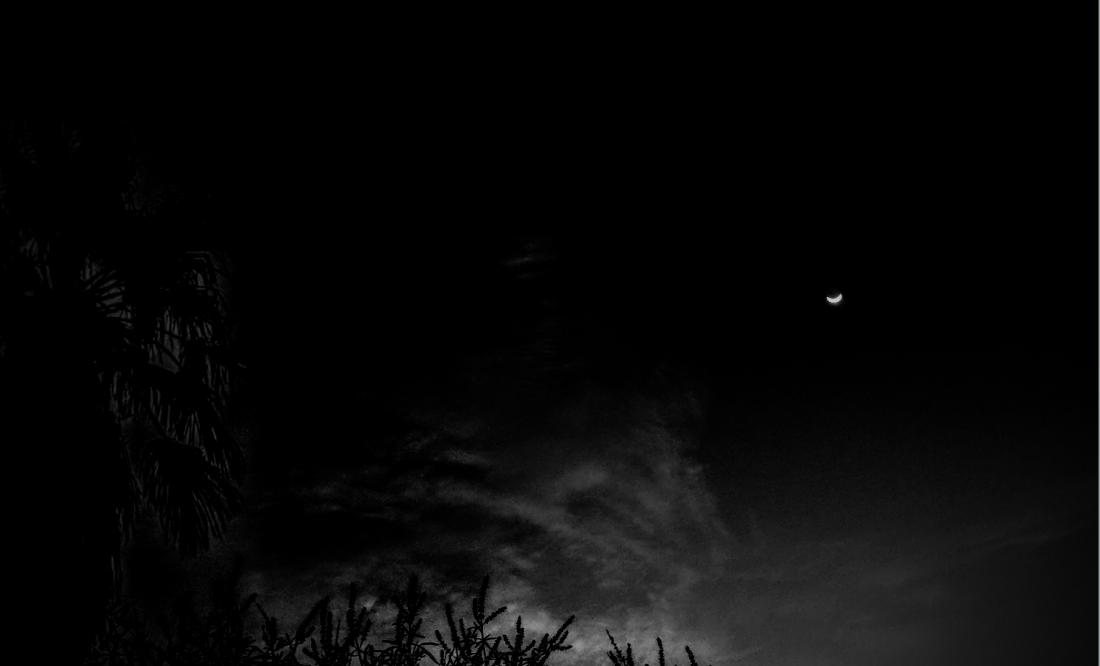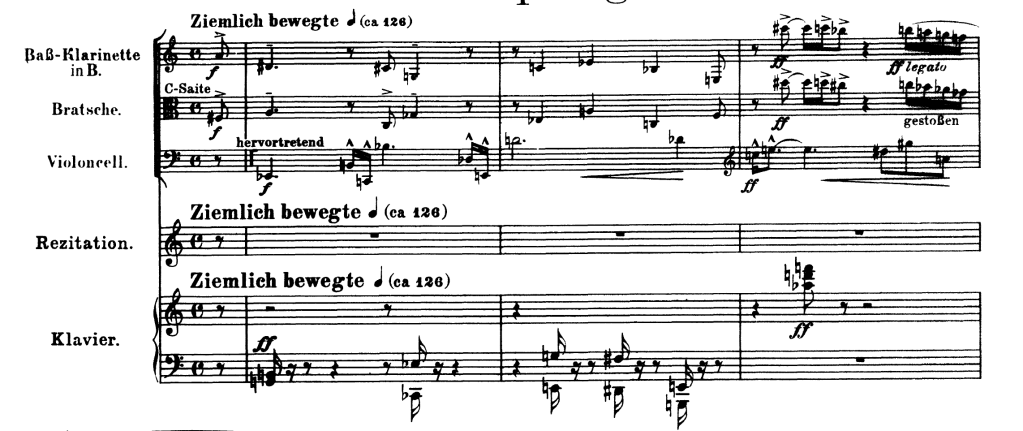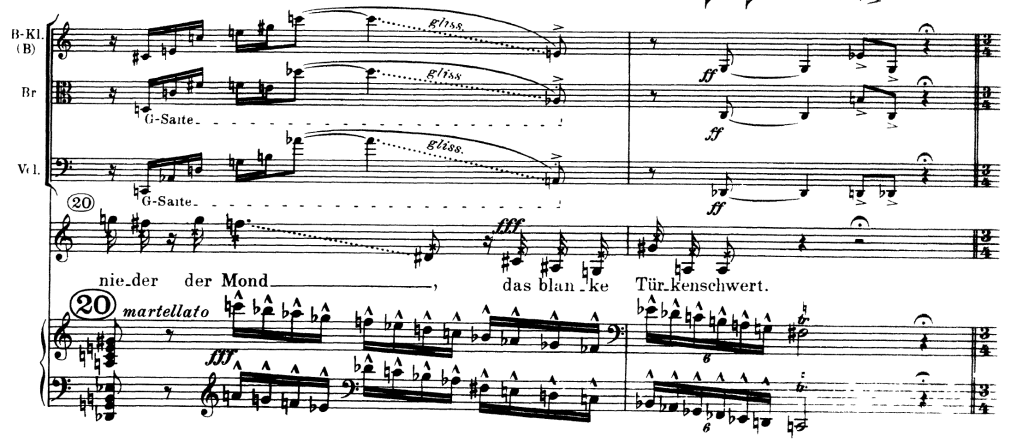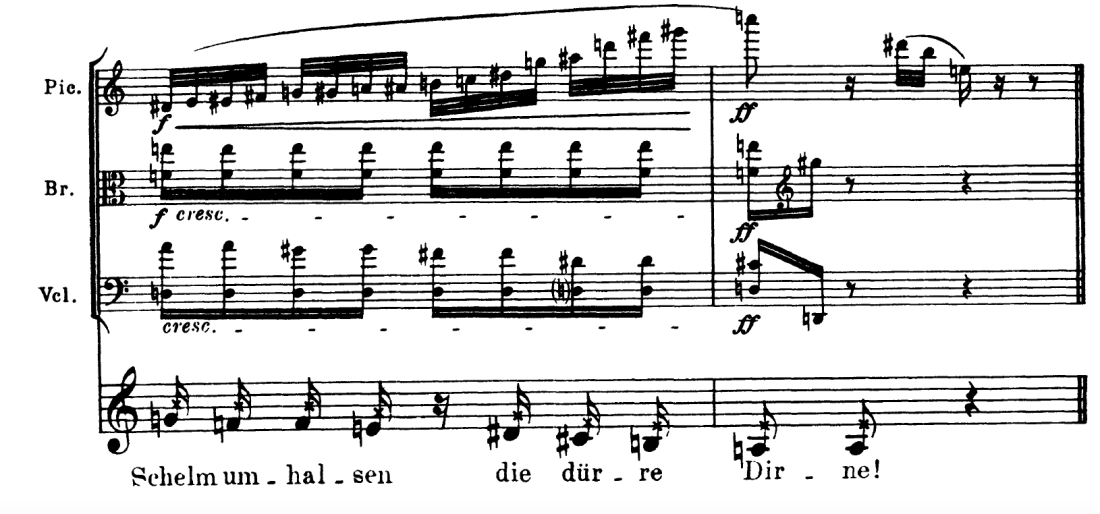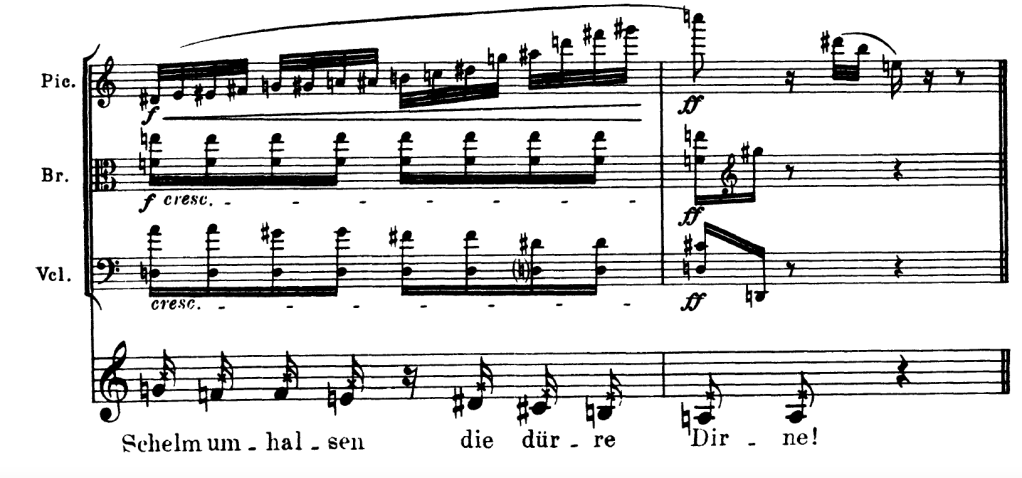O fairyland fragrance of long ago,
Once more you cast your spell on me!
And a horde of roguish knaves
Drifts weightless on the air.
That “ancient scent,” “fragrance of long ago,” the unforgettable perfume of the land of fairy tales – I suppose Schoenberg uses tonal artifacts to suggest it, as everyone else says and writes. He does frequently enough draw on E major. Look at the right hand in m. 1 of the piano with its descending thirds taken from the key of E major or the chord in m. 3 (E major) that closes the vocalist’s phrase on the word Märchenzeit. There’s another telltale moment in m. 16, where the right hand of the piano has the E major chord again, albeit rhythmically activated. And in the penultimate bar of the piece, there’s a sort of landing on E in the bass (in octaves, that rarest of rare intervals in Pierrot), again on the word Märchenzeit. Here it is, then: whenever that word appears, in its three ritual statements over the three stanzas of the poem, the music holds up its E major card. But it’s crucial, I think, to realize that this E major chord, figure, or bass note is always presented as one layer in a multilayered texture that is layered vertically, yes, and also horizontally. The left hand in m. 1, for instance, undercuts E major and is also fascinating: a much better candidate than the right for the wafting scent of fairyland, moving smoothly, gently, in a way that is strikingly linear for Pierrot.
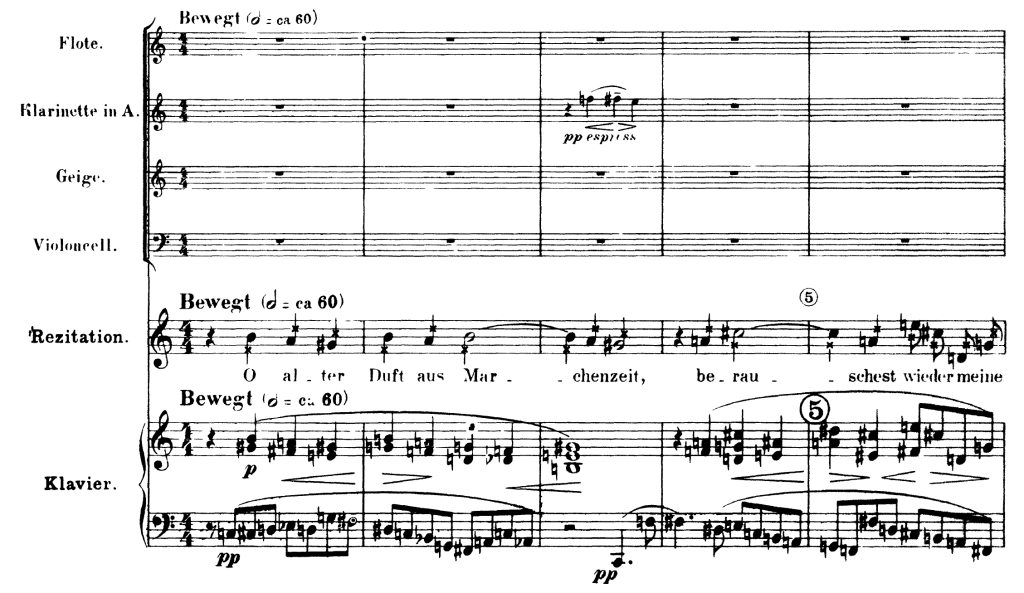
This sort of text painting, bringing images and ideas from the poem to new life through musical figures, is relatively understated in “O alter Duft.” Here Schoenberg seems to take a step away from the musical “performance” of the poetry to focus on a deeper through line. It’s for this reason, perhaps, that he’s willing to repeat the music of mm. 1-2 in mm. 14-15, only slightly altered, and again in mm. 26-end, though here it is subjected to greater change. The idea of refrain, so familiar to the poetry, has been meticulously avoided through most of the cycle, and now, we have it in such clarity that a first-time listener can hear the “tune” that returns. Inevitably, this is a way of cultivating the sensation of nostalgia within the movement itself. Schoenberg makes the tune so clear, by making it a tonal artifact and linking it to a certain word, Märchenzeit, that we are invited to long for its return. But there’s also the possibility of us hearing the cultivation of nostalgia more globally – and I think many people have suggested as much – because by linking tonal artifacts and nostalgia, Schoenberg might lead us to long for the tonal system as a whole, to see the common practice period as a prelapsarian age of innocence.
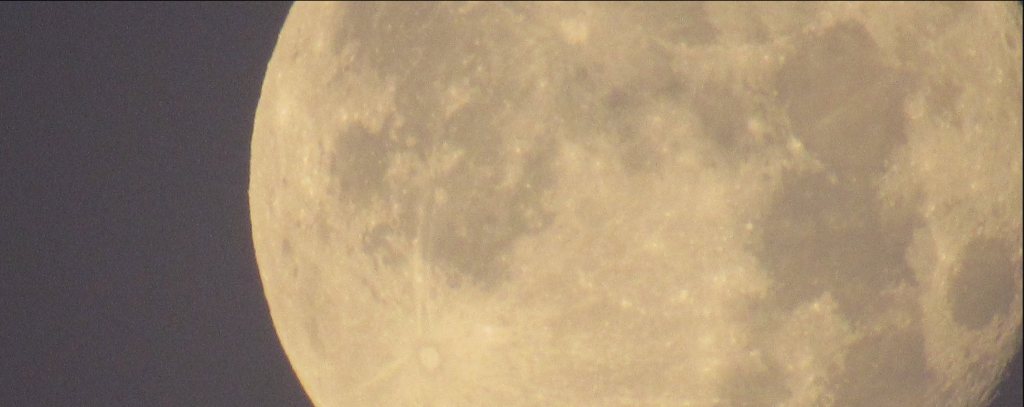
In its last movement, Pierrot lunaire asks us who we are. Are we people who long to turn back the clock, to return to an imagined time when we “thought as a child”? Or do we understand the place we long for, the Märchenzeit, as that undiscovered country where Pierrot performed: those extraordinary movements that passed by so quickly, like dreams, each a little miracle of craft and intelligence, wit and jest, horror and delight? Who are we when we yearn? What ancient scent lingers for us after the vocalist, alone, intones her final Märchenzeit? One thing we must allow Pierrot is that it has the power to change our answer. We grow up through it.
